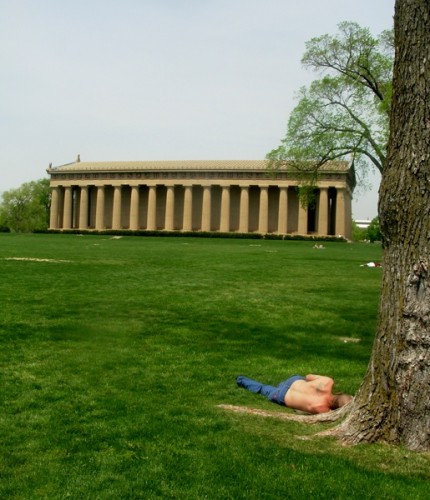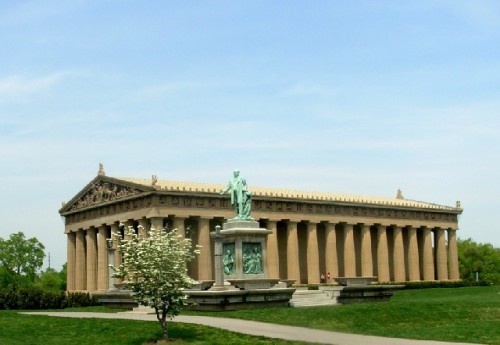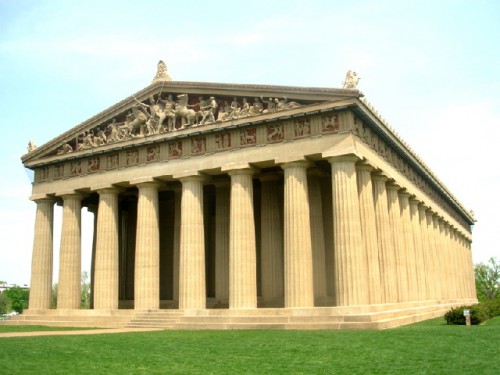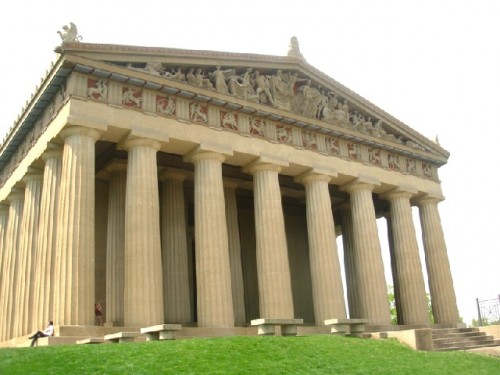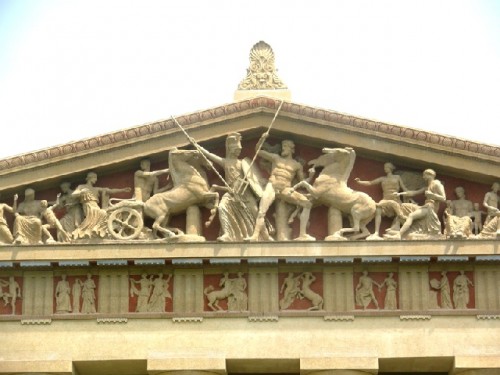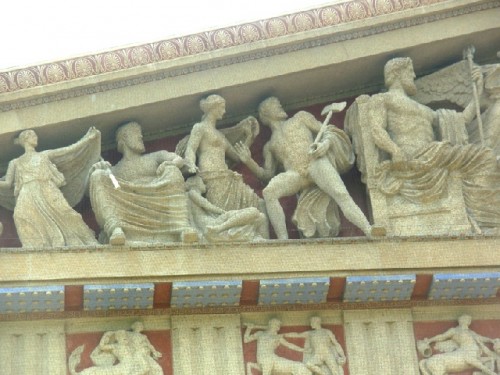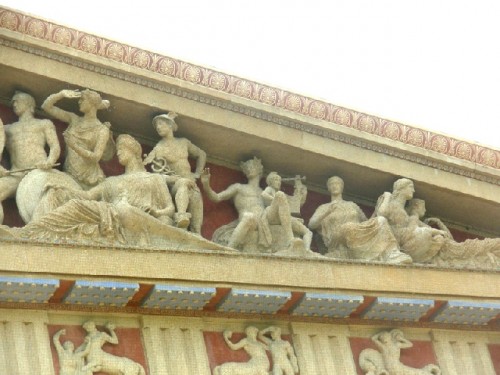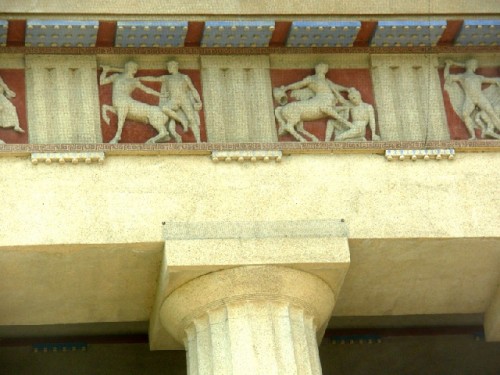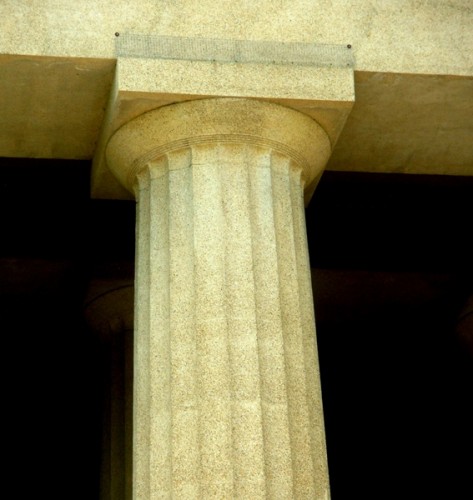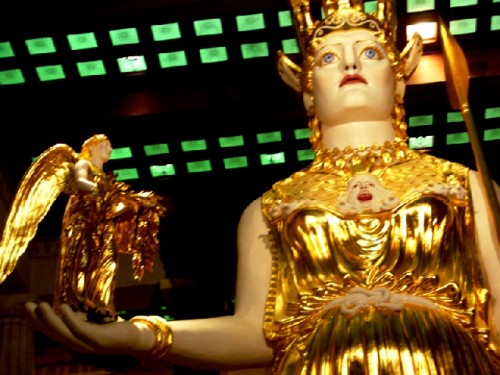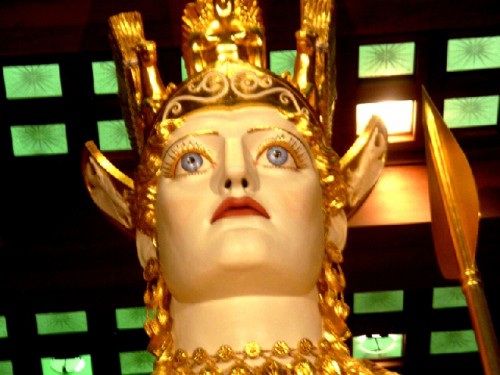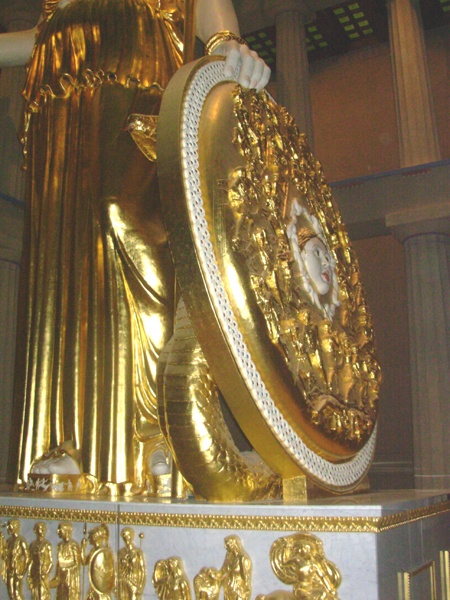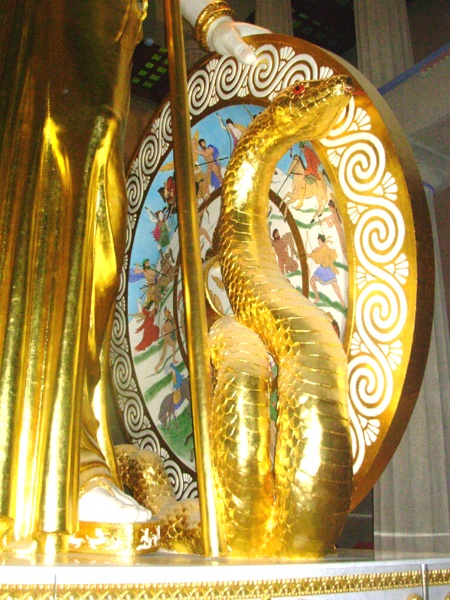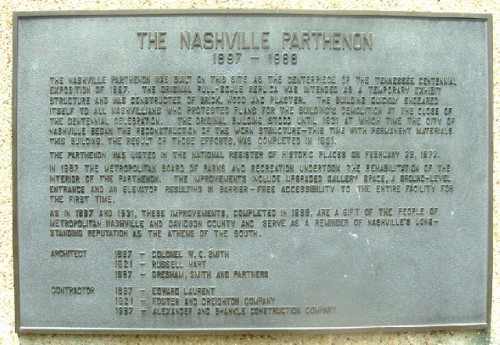Greek Architecture in Nashville's Parthenon
Athena As a Country and Western Star
By: Charles Giuliano - Apr 23, 2008
The Parthenon is the only surviving "temporary" pavilion from the 1897 Centennial for the city of Nashville, Tennessee.Originally, there was a pyramid next to it as well as exotic examples of architecture representing other nations.
The locals claim that the meticulously reproduced Parthenon is "Better than the original which has fallen into disrepair" after some 2,500 years. Where the original Parthenon was constructed in the 5th century B.C., at the height of Athenian wealth and power, from exquisite marble, the Nashville version was created using reinforced concrete and gypsum. This material suffered from time and neglect requiring extensive renovation which was completed in 2002.
During the 1800s, Lord Elgin, then the British ambassador to the Turkish court, bribed the corrupt government and received permission to remove the sculptures designed by Phidias. Greece was then under Turkish occupation and could not prevent this outrageous theft. Today, the Elgin Marbles remain in the British Museum despite international efforts to return these treasures to Athens.
It is fascinating to compare those cherished fragments in London to their over the top reconstructions in Nashville. The Parthenon was bombed and extensively damaged during the time of war with Turkey. But the enormous statue of the goddess Athena created by Phidias had long disappeared before the arrival of Lord Elgin.
Scholars have recently suggested that the Parthenon may have served as a treasury and not, as has long been assumed, a temple in honor of the goddess Athena. The warrior goddess emerged full grown from the forehead of her father Zeus who had turned her pregnant mother into a fly and inhaled her.
The over the top, gaudy version of Athena which reaches to the ceiling of the Parthenon with her gilded details, blue eyes, and sensual curves seems more like a full figured, coutry and western star than the Greek goddess of war and wisdom. On her oustretched palm the smaller figure of Nike reaches forward with a laurel wreath, the symbol of victory.
No visit to Nashville is complete without a visit to this remarkable recreation of classical art and architecture.

